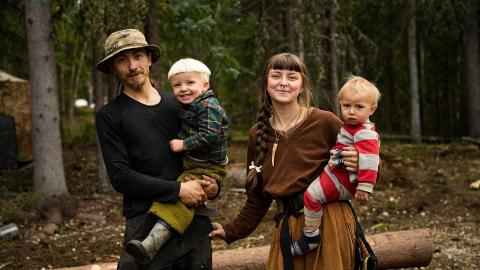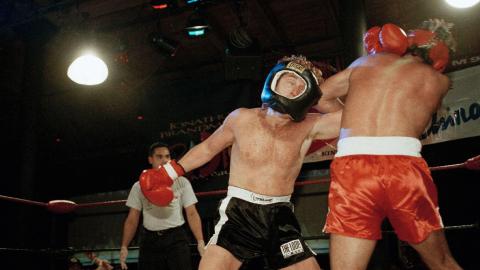
The complicated legacy of Coco Chanel
Coco Chanel: an icon in the fashion world, a woman credited with changing fashion forever, whose personal life was forever marred by tragedy and latterly, controversy and accusations of espionage
Coco Chanel in Los Angeles (colourised) | Image: CC BY 4.0
Coco Chanel: an icon in the fashion world, a woman credited with changing fashion forever, whose personal life was forever marred by tragedy and latterly, controversy and accusations of espionage. This is her biography.
Her early life
Gabrielle Bonheur Chanel was born in 1883 in a charity hospital, the second daughter of Eugénie Jeanne Devolle (the hospital’s laundrywoman) and Henri-Albert Chanel (a street vendor). The pair only married a year after Chanel’s birth.
Her childhood was one marred by poverty and neglect, something that began at birth when her name was misspelt as Chasnel on her birth certificate—her father was absent and her mother too ill to attend the baby’s registering.
The mistake went uncorrected to her death as changing it would have meant revealing she was born in a poor house. The error made it difficult to trace her origins and Chanel herself in later years would often obfuscate the facts around her biography, choosing a more glamorous narrative.
The couple had six children together, three girls and three boys, the youngest of whom died at six months.
Chanel’s mother, too, died suddenly when she was only 11 and she lost her father soon after, when Henri-Charles abandoned his family. His sons were sent to work as labourers and his daughters to an orphanage, the Sisters of the Sacred Heart. Chanel stayed there for the rest of her childhood.
While they were at the orphanage, Chanel’s older sister, Julia, became pregnant with a son, André Palasse. When she died, aged 28 (her sister always claimed it was suicide), Chanel adopted her, then, six-year-old nephew and raised him.
Stage aspirations
Chanel left the orphanage at age 18. She started working as a seamstress, but her evenings were spent on the stage at a café, singing cabaret. She had two songs in her arsenal: 'Ko Ko Ri Ko' and ‘Qui qu'a vu Coco’, which, it’s rumoured, is where she got her nickname, ‘Coco’. Chanel spent some time pursuing a career on the stage, even moving to Vichy in 1906, but struggling to get work, she abandoned her dream.
It was around this time she met a cavalry officer, Étienne de Balsan, whose father was a textile entrepreneur. The two began a relationship. She lived with him and he in turn introduced her to his social circles and showered her with gifts. It’s rumoured that the nephew she brought up following her sister’s death was their child.
During this time, Chanel realised her talents as a milliner and Balsan financed her work. There was a growing interest in her designs, and she began selling her hats to her friends.
After six years together, Chanel ended her relationship with Balsan to pursue his friend, Arthur ‘Boy’ Capel.
Early designs
Like Balsan, Capel also came from a wealthy family and, once again, the pair mixed a romantic relationship with the professional. In 1914, she opened her first shop, through money given to her by Capel. A showroom quickly followed, in 1916. Her emphasis on sporty silhouettes and belief that luxury should be comfortable was a radical departure from the corseted forms that had previously defined women’s fashion. Her revolutionary approach was further helped when in 1916, a textile industrialist, Rodier, exclusively gave her a jersey fabric. It cemented Chanel’s innovative design aesthetic.
In total, Chanel and Capel were together for nine years, although he remained unfaithful to her, even marrying someone else (Lady Diana Wyndham in 1918). This didn’t end their relationship, though and they continued to see each other until his sudden death in a car crash in 1919. Chanel said she never recovered and after Capel’s death, her romantic connections were limited to a series of affairs.
Professionally, though, she continued to thrive throughout the 1920s.
Chanel’s focus on clean lines and simple silhouettes led to one of her most iconic creations: the little black dress. The signature Chanel suit came, too. Created in tweed, gabardine, and Chanel’s signature jersey, they offered tailoring without constriction. It was also in the 1920s that Chanel released her first perfume.
Next came a focus on jewellery and accessories. In 1929, she released her first bag. It was the basis of what would later become the now-iconic Chanel 2.55 bag, said to be the most copied bag in the world.
At the beginning of the 1930s, Chanel travelled to Hollywood to design on-screen costumes. But the designs didn’t translate, and she left.
The Second World War
Her success came to a pause with World War II. In 1939, Chanel was forced to close her shops, and the Nazis took over Paris in 1940.
Personally, however, she remained in the same high society circles she was now accustomed to. Her antisemitic views were already public, and she soon began a relationship with a German officer in military intelligence, Baron Hans Günther von Dincklage. Through him, she was able to move into the Ritz in Paris. She was also able to ensure the release of her nephew from the German Stalag where he was imprisoned in in 1940.
In return, Chanel began to work for the German military, becoming a registered agent in the intelligence service, trading on her connections and standing through Europe to obtain information that would help the Nazi party.
Chanel was outed in 1944 when the French reclaimed Paris. Although she was questioned, she was released and fled to Switzerland. After the war had ended, she appeared in court but admitted only to her connections and the release of her nephew. She ultimately never saw any repercussions for her actions.
The final years
In 1954, Chanel made a return to fashion, relaunching the 2.55 bag (named after the date it was released), as well as the iconic knitted suit. A retinue of celebrity fans of her work, including Grace Kelly and Jackie O, ensured her status and reputation.
She continued as a celebrated designer and celebrity until her death, at the Ritz, in 1971.






















